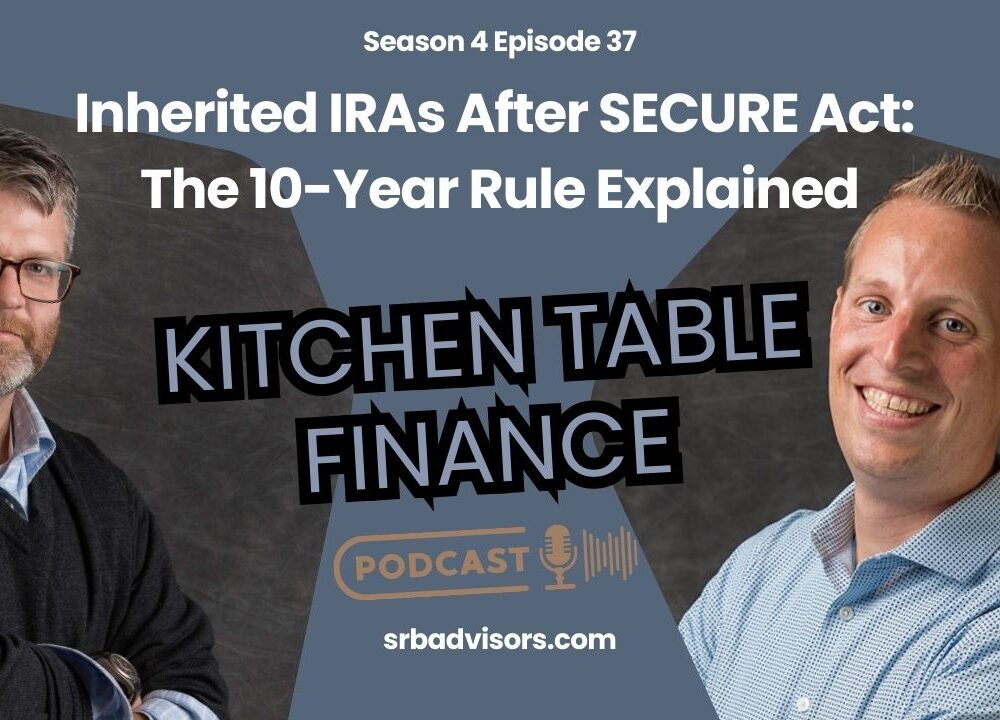Getting Started in Your Employer’s Retirement Plan

Podcast: Play in new window | Download
Starting a new job that offers retirement benefits is great. But your employer’s retirement plan can offer a bewildering array of choices if you’re not used to the language of savings and investing. The good news is that getting started in retirement savings requires making only a few straight-forward decisions and understanding some basic investment concepts to keep you on track.
#1. Just Do It
Don’t procrastinate or get caught up in the details. Get started saving into your retirement plan as soon as you can. It is better for you to make the wrong type of contribution or invest in the wrong fund than to not contribute at all. The most important thing is to get started right away.
You can always make changes down the road, but you can never make up a lost contribution or the value of compound interest. It’s easy to forget that the most important money you invest in a retirement plan is the first contribution because it has the longest time to grow. The other benefit of starting right away is that you probably haven’t gotten used to your new paycheck yet. By getting your contributions started before settling into a budgeting routine, it’s easier to get over the reduced take-home pay. Making bigger contributions later to make up for not starting sooner will feel more painful.
#2. Budgeting Groundwork
The best way to invest in your retirement plan with confidence is to know your budget and have a contingency fund established for emergencies. Many retirement plans have a waiting period for eligibility before you can begin participating, and that is a good time to get things in order.
Work out a monthly budget for your new job and set a monthly amount in saving to build up a contingency fund. When you reach eligibility the amount you have been subtracting from your pay to go into savings can now go into the plan and you won’t miss it as much. By having a contingency plan and a good handle on your budget, it will be easier to resist the urge to pull money back out of your retirement plan when surprises come up, like car repairs or home maintenance.
#3. Determine Your Contribution Level
Most plans calculate contributions as a percentage of your gross pay. A good general rule of thumb is to shoot for 10% of your gross income in annual retirement savings, and 15% is better if you can afford to do so.
If your employer matches your contributions, try to start with an amount that captures all that match. For instance, if your company matches your contributions 50% for the first 6%, you should aim to start with 6% of your own money, which means your overall contribution between you and the company would be 9%. That gets you most of the way to your goal. As you get raises or bonuses, and as you get a feel for your budget with your new job, look for opportunities to increase your contribution.
There is a maximum amount you can contribute, depending on the type of plan. If you’re able to save more than the maximum you can begin an after-tax investment account. If you meet certain income limitations, you can contribute to a traditional IRA or a Roth IRA in addition to your company’s plan.
#4. Choose a Contribution Type
Many, but not all, retirement plans allow for either traditional or pre-tax retirement contributions as well as Roth, or post-tax retirement contributions.
A traditional contribution is subtracted from your taxable income when you make the contribution, reducing your taxes this year. However, keep in mind that it is taxed when you take a distribution during retirement.
A Roth contribution is taxed as part of your income this year but is tax-free during retirement.
Choosing which type is best really depends on your tax bracket now versus your expected tax bracket in retirement – and that impossible to determine with any certainty. As a rule of thumb, we generally recommend that clients make Roth contributions if their tax bracket is lower than the 22% marginal tax bracket.
The marginal tax bracket in 2020 is currently defined as less than $40,000 in taxable income if you are single or $79,000 if you file jointly.
Beyond that, Roth contributions may still make sense, but it is a bit less cut and dry. But do not get hung up on the decision – you won’t be too wrong either way.
#5. Choose an investment
Getting this right is easier – and far less important when you’re starting out – then people realize. When you first start investing there is very little money in the account relative to the amount you are contributing each year, so the return on that money doesn’t have much impact.
For this reason, our advice is to go ahead and take a lot of market risk when you are starting out. Pick something low cost and full of stock, like an S&P 500 Fund, and just keep contributing for a while.
Another good option in this situation might be a target-date retirement fund. These funds are usually the default plan options, and they provide a diversified and managed investment option with the risk geared to be appropriate for when you may need to use the funds. Pick one that has a year that corresponds to when you may retire. For instance, if you’re 25 right now, you might choose a fund with a target date of 2060. The fund will get more conservative as that date approaches.
#6. Consistently add funds from your paycheck and ignore the market
This is the most important piece of advice I can offer. Many beginning investors lose heart when they see the market drop and their hard-earned money goes down in value. It’s counter-intuitive, but for investors just starting out, falling markets are a good thing. You are buying more shares with your contributions when the market goes down. Then, when the market comes back up – and it always will – you see your account grow faster because of the higher number of shares.
Ignore the fluctuations, and, if you do anything differently during downturns, INCREASE your contribution. When the market drops, you can buy the same shares at a lower price. When the market returns in a positive direction, you’ll own more shares than you would have if the price had always remained high, and your returns will compound more quickly.
Employer’s Retirement Plan: The Wrap Up
Don’t be afraid to ask for help. Hire an advisor to review your plan and help you determine how all these factors influence your future. Look at the fee you pay an advisor as an investment in your future, just as you view the contributions you make to the plan.
About Shotwell Rutter Baer
Shotwell Rutter Baer is proud to be an independent, fee-only registered investment advisory firm. This means that we are only compensated by our clients for our knowledge and guidance — not from commissions by selling financial products. Our only motivation is to help you achieve financial freedom and peace of mind. By structuring our business this way we believe that many of the conflicts of interest that plague the financial services industry are eliminated. We work for our clients, period.
Click here to learn about the Strategic Reliable Blueprint, our financial plan process for your future.
Call us at 517-321-4832 for financial and retirement investing advice.
Share post:
